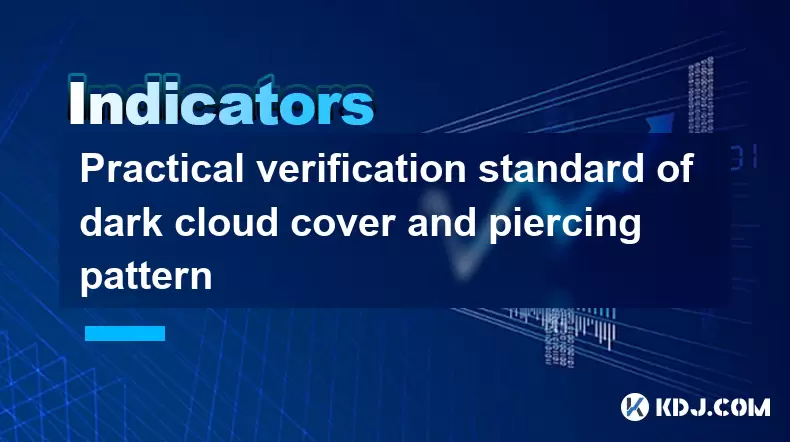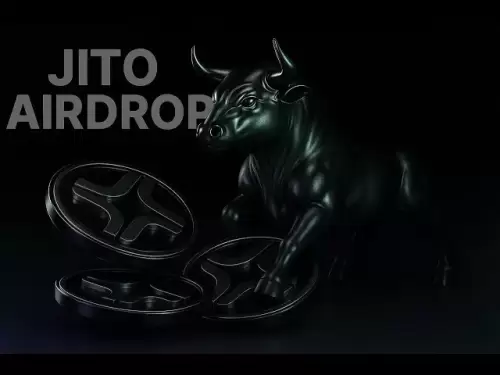-
 Bitcoin
Bitcoin $118600
0.36% -
 Ethereum
Ethereum $3855
1.06% -
 XRP
XRP $3.195
-0.09% -
 Tether USDt
Tether USDt $1.000
-0.04% -
 BNB
BNB $844.5
6.23% -
 Solana
Solana $191.3
2.83% -
 USDC
USDC $0.9997
-0.01% -
 Dogecoin
Dogecoin $0.2376
0.10% -
 TRON
TRON $0.3242
0.83% -
 Cardano
Cardano $0.8222
0.13% -
 Hyperliquid
Hyperliquid $45.26
6.53% -
 Sui
Sui $4.200
-2.56% -
 Stellar
Stellar $0.4336
-1.24% -
 Chainlink
Chainlink $18.86
0.28% -
 Hedera
Hedera $0.2796
-1.75% -
 Bitcoin Cash
Bitcoin Cash $583.3
-1.84% -
 Avalanche
Avalanche $27.06
8.09% -
 Litecoin
Litecoin $112.3
-1.16% -
 Toncoin
Toncoin $3.353
0.58% -
 UNUS SED LEO
UNUS SED LEO $8.968
-0.11% -
 Shiba Inu
Shiba Inu $0.00001395
-0.54% -
 Ethena USDe
Ethena USDe $1.001
-0.03% -
 Uniswap
Uniswap $10.76
0.69% -
 Polkadot
Polkadot $4.175
0.26% -
 Monero
Monero $326.7
1.07% -
 Bitget Token
Bitget Token $4.665
1.61% -
 Dai
Dai $0.9998
-0.02% -
 Pepe
Pepe $0.00001271
0.32% -
 Cronos
Cronos $0.1416
2.01% -
 Aave
Aave $299.3
1.15%
Practical verification standard of dark cloud cover and piercing pattern
The Dark Cloud Cover is a bearish reversal pattern in crypto trading, forming when a bullish candle is followed by a second candle that opens higher but closes below the midpoint of the first, signaling potential trend reversal.
Jul 28, 2025 at 01:35 pm

Understanding the Dark Cloud Cover Pattern in Cryptocurrency Trading
The Dark Cloud Cover is a bearish reversal candlestick pattern that typically appears at the end of an uptrend in cryptocurrency price charts. This two-candle formation signals a potential shift from bullish to bearish momentum. The first candle is a strong bullish (green) candle, indicating continued upward movement. The second candle opens above the high of the first but closes below its midpoint, ideally below the 50% retracement level of the prior candle’s body. This closing price shift suggests that sellers have taken control by the end of the session.
For a valid Dark Cloud Cover, several conditions must be met. The market must be in a clear uptrend before the pattern forms. The second candle must open above the close of the first candle, showing initial bullish continuation, but then reverse sharply. The close of the second candle must penetrate deeply into the body of the first candle—ideally below the 50% level—to confirm strong selling pressure. The deeper the penetration, the stronger the bearish signal. Traders often use volume as a confirmation tool; a spike in volume during the second candle reinforces the validity of the reversal.
It’s crucial to differentiate a true Dark Cloud Cover from similar-looking patterns. If the second candle closes only slightly into the first candle’s body, the signal is weak. Also, if the second candle completely engulfs the first, it may instead be classified as a Bearish Engulfing pattern. The distinction lies in the opening and closing positions: in a Dark Cloud Cover, the second candle opens above the first’s close but fails to sustain gains.
Validating the Piercing Pattern in Crypto Markets
The Piercing Pattern is the bullish counterpart to the Dark Cloud Cover and appears at the end of a downtrend. It consists of two candles: a long bearish (red) candle followed by a bullish candle that opens below the low of the prior candle but closes above the midpoint of the first candle’s body. This indicates a strong buying surge that overcomes initial selling pressure.
To confirm a valid Piercing Pattern, the first candle must reflect a strong downtrend. The second candle should open with a gap down, showing continued bearish sentiment, but then reverse course dramatically. The close must be above the 50% retracement of the first candle’s real body. A close near the top third of the range increases the reliability of the signal. Like the Dark Cloud Cover, volume plays a key role—increased volume on the second candle supports the reversal.
One common mistake is misidentifying a simple bounce as a Piercing Pattern. For authenticity, the second candle must show a clear gap down at the open and a decisive close above the midpoint. If the second candle opens within the range of the first, it does not meet the criteria. Also, the presence of long lower wicks on the second candle can indicate strong support and enhance the bullish outlook.
Practical Steps to Identify and Confirm the Patterns
To apply these patterns effectively in cryptocurrency trading, follow these steps:
- Select a suitable timeframe: Use 4-hour, daily, or weekly charts for higher reliability. Lower timeframes like 5-minute charts may produce false signals due to noise.
- Confirm the trend context: Ensure the market is in a clear uptrend for Dark Cloud Cover or a downtrend for Piercing Pattern. Use moving averages (e.g., 20-day and 50-day EMA) to assess trend direction.
- Analyze the candle structure: Measure the body length and closing position. For Dark Cloud Cover, the second candle must close below the midpoint of the first. For Piercing, the second must close above the midpoint.
- Check for gaps: The second candle in a Dark Cloud Cover should gap up at the open; in a Piercing Pattern, it should gap down.
- Validate with volume: A surge in trading volume during the second candle strengthens the reversal signal. Low volume may indicate lack of conviction.
These steps help filter out false patterns and increase the probability of successful trades.
Using Technical Indicators to Enhance Signal Accuracy
While candlestick patterns provide visual cues, combining them with technical indicators improves reliability. The Relative Strength Index (RSI) is particularly useful. For a Dark Cloud Cover, look for RSI above 70, indicating overbought conditions. A drop below 70 after the second candle confirms weakening momentum. For a Piercing Pattern, RSI below 30 suggests oversold conditions, and a rebound above 30 supports bullish reversal.
The MACD (Moving Average Convergence Divergence) can also assist. A bearish crossover (signal line crossing below MACD line) after a Dark Cloud Cover reinforces the sell signal. Conversely, a bullish MACD crossover following a Piercing Pattern adds confirmation. Additionally, support and resistance levels should align with the pattern. A Dark Cloud Cover forming near a known resistance zone increases its significance. Similarly, a Piercing Pattern at a strong support level is more trustworthy.
Backtesting and Risk Management in Pattern Trading
Before trading live, backtest these patterns on historical cryptocurrency price data. Use platforms like TradingView to scan past charts for Dark Cloud Cover and Piercing Patterns. Record the outcomes: how often did price reverse? What was the average profit or loss? This empirical analysis helps determine the pattern’s effectiveness in specific market conditions.
Risk management is essential. Always place a stop-loss order above the high of the Dark Cloud Cover for short positions or below the low of the Piercing Pattern for long entries. Position size should align with risk tolerance—never risk more than 1–2% of capital per trade. Take-profit levels can be set at previous support or resistance zones, or using a risk-reward ratio of at least 1:2.
Common Pitfalls and How to Avoid Them
Traders often misinterpret these patterns due to impatience or lack of confirmation. One major error is acting on isolated candlestick formations without considering volume, trend, or broader market context. Another is ignoring market news and macro events—a sudden regulatory announcement can override any technical signal.
Avoid trading these patterns during low-liquidity periods, such as weekends in crypto markets, where price action can be erratic. Also, be cautious in sideways or choppy markets; these patterns lose relevance without a clear trend. Always wait for the second candle to fully close before making a decision—premature entries based on incomplete candles lead to losses.
FAQs
What timeframes are most reliable for identifying Dark Cloud Cover and Piercing Patterns?
The daily and 4-hour charts are most effective. These timeframes reduce market noise and provide clearer trend context. Patterns on 1-hour or lower charts often produce false signals due to volatility in cryptocurrency markets.
Can these patterns be used in ranging markets?
These patterns are designed for trending markets. In sideways or consolidating markets, they lose predictive power. Traders should avoid relying on them when price is bouncing between support and resistance without a clear direction.
How important is volume in confirming these patterns?
Volume is critical. A Dark Cloud Cover with high volume on the second candle shows strong selling pressure. Similarly, a Piercing Pattern with rising volume indicates genuine buying interest. Low volume suggests weak conviction and increases the risk of a false signal.
Should I use these patterns alone or with other tools?
Never rely solely on candlestick patterns. Combine them with RSI, MACD, moving averages, and support/resistance levels for higher accuracy. Using multiple confirming factors reduces the chance of entering a losing trade.
Disclaimer:info@kdj.com
The information provided is not trading advice. kdj.com does not assume any responsibility for any investments made based on the information provided in this article. Cryptocurrencies are highly volatile and it is highly recommended that you invest with caution after thorough research!
If you believe that the content used on this website infringes your copyright, please contact us immediately (info@kdj.com) and we will delete it promptly.
- Avalanche (AVAX) Price Pump Incoming? Analysts Weigh In
- 2025-07-29 06:50:12
- Presales, Investment, July 2025: What's Hot and What's Not
- 2025-07-29 06:30:12
- PayPal, Bitcoin, and Merchants: A New Era of Commerce?
- 2025-07-29 07:10:13
- RUVI Token's Ripple Rally Potential: Audited AI Crypto Heats Up!
- 2025-07-29 04:50:12
- ADA Price, Cardano, SUI & Remittix: Decoding the Latest Crypto Moves
- 2025-07-29 04:50:12
- Solana, ARK Invest, and Staking: A New Era of Institutional Crypto?
- 2025-07-29 05:30:12
Related knowledge

What does it mean when the EMA combination crosses upward for the first time after sideways trading?
Jul 28,2025 at 03:43pm
Understanding the EMA and Its Role in Technical AnalysisThe Exponential Moving Average (EMA) is a widely used technical indicator in cryptocurrency tr...

What signal does the ROC send when it rises rapidly from a low level and breaks through the zero axis?
Jul 27,2025 at 10:15am
Understanding the Rate of Change (ROC) IndicatorThe Rate of Change (ROC) is a momentum-based oscillator used in technical analysis to measure the perc...

What does it mean when the price breaks through the double bottom neckline and the moving averages are arranged in a bullish pattern?
Jul 28,2025 at 10:57am
Understanding the Double Bottom PatternThe double bottom is a widely recognized reversal chart pattern in technical analysis, particularly within the ...

What signal does the DMA fast line cross the slow line above the zero axis?
Jul 28,2025 at 05:42am
Understanding the DMA Indicator and Its ComponentsThe DMA (Difference of Moving Averages) indicator is a technical analysis tool used in cryptocurrenc...

What does it mean that the rebound is blocked after the moving average is arranged in a short position for the first time?
Jul 26,2025 at 10:51am
Understanding the Short-Term Moving Average ConfigurationWhen traders refer to a 'short position arrangement' in moving averages, they are describing ...

What does it mean that the ZIGZAG low point is raised and the high point breaks through the previous peak?
Jul 28,2025 at 03:28am
Understanding the ZIGZAG Indicator in Cryptocurrency TradingThe ZIGZAG indicator is a technical analysis tool widely used in cryptocurrency trading to...

What does it mean when the EMA combination crosses upward for the first time after sideways trading?
Jul 28,2025 at 03:43pm
Understanding the EMA and Its Role in Technical AnalysisThe Exponential Moving Average (EMA) is a widely used technical indicator in cryptocurrency tr...

What signal does the ROC send when it rises rapidly from a low level and breaks through the zero axis?
Jul 27,2025 at 10:15am
Understanding the Rate of Change (ROC) IndicatorThe Rate of Change (ROC) is a momentum-based oscillator used in technical analysis to measure the perc...

What does it mean when the price breaks through the double bottom neckline and the moving averages are arranged in a bullish pattern?
Jul 28,2025 at 10:57am
Understanding the Double Bottom PatternThe double bottom is a widely recognized reversal chart pattern in technical analysis, particularly within the ...

What signal does the DMA fast line cross the slow line above the zero axis?
Jul 28,2025 at 05:42am
Understanding the DMA Indicator and Its ComponentsThe DMA (Difference of Moving Averages) indicator is a technical analysis tool used in cryptocurrenc...

What does it mean that the rebound is blocked after the moving average is arranged in a short position for the first time?
Jul 26,2025 at 10:51am
Understanding the Short-Term Moving Average ConfigurationWhen traders refer to a 'short position arrangement' in moving averages, they are describing ...

What does it mean that the ZIGZAG low point is raised and the high point breaks through the previous peak?
Jul 28,2025 at 03:28am
Understanding the ZIGZAG Indicator in Cryptocurrency TradingThe ZIGZAG indicator is a technical analysis tool widely used in cryptocurrency trading to...
See all articles

























































































